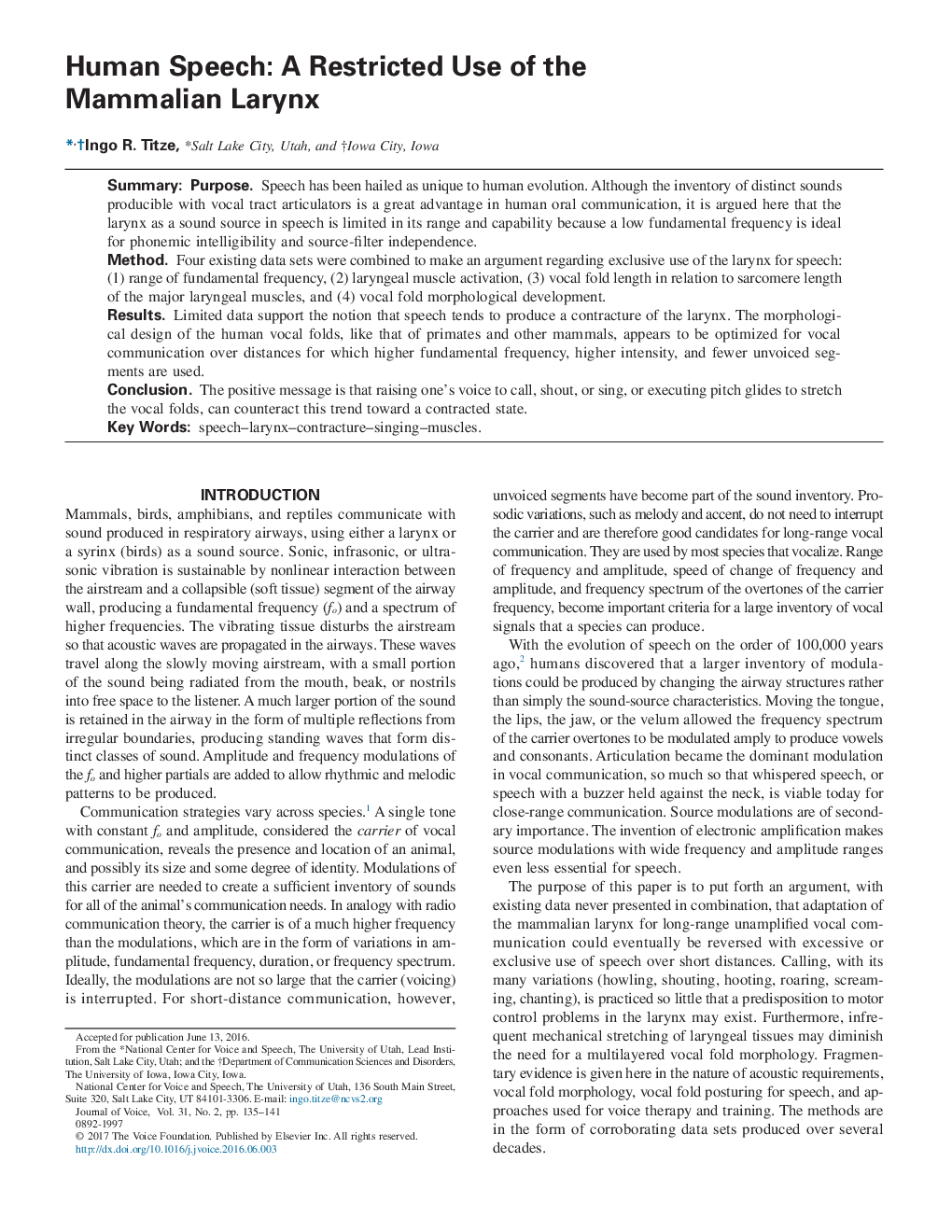| Article ID | Journal | Published Year | Pages | File Type |
|---|---|---|---|---|
| 5124385 | Journal of Voice | 2017 | 7 Pages |
SummaryPurposeSpeech has been hailed as unique to human evolution. Although the inventory of distinct sounds producible with vocal tract articulators is a great advantage in human oral communication, it is argued here that the larynx as a sound source in speech is limited in its range and capability because a low fundamental frequency is ideal for phonemic intelligibility and source-filter independence.MethodFour existing data sets were combined to make an argument regarding exclusive use of the larynx for speech: (1) range of fundamental frequency, (2) laryngeal muscle activation, (3) vocal fold length in relation to sarcomere length of the major laryngeal muscles, and (4) vocal fold morphological development.ResultsLimited data support the notion that speech tends to produce a contracture of the larynx. The morphological design of the human vocal folds, like that of primates and other mammals, appears to be optimized for vocal communication over distances for which higher fundamental frequency, higher intensity, and fewer unvoiced segments are used.ConclusionThe positive message is that raising one's voice to call, shout, or sing, or executing pitch glides to stretch the vocal folds, can counteract this trend toward a contracted state.
